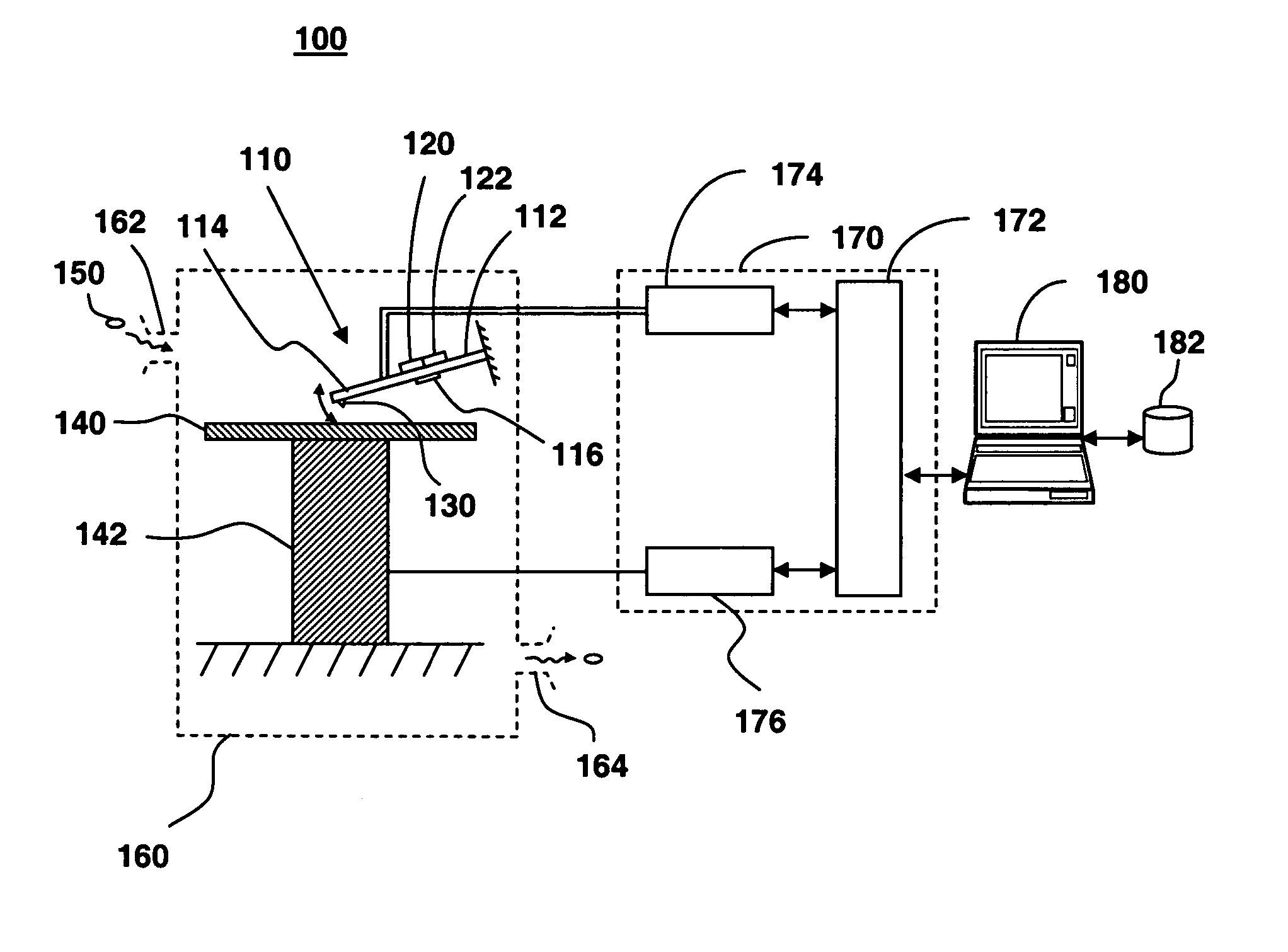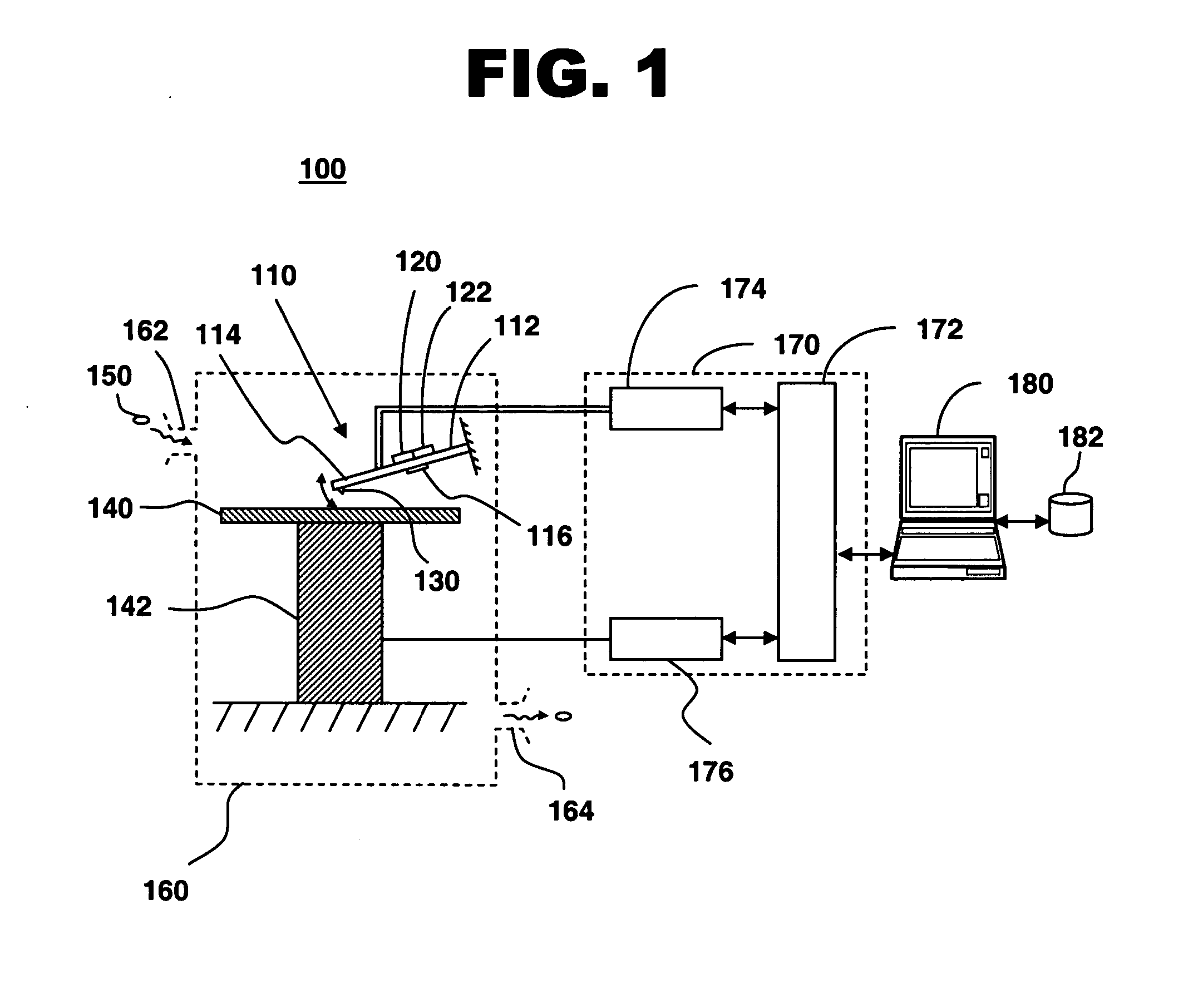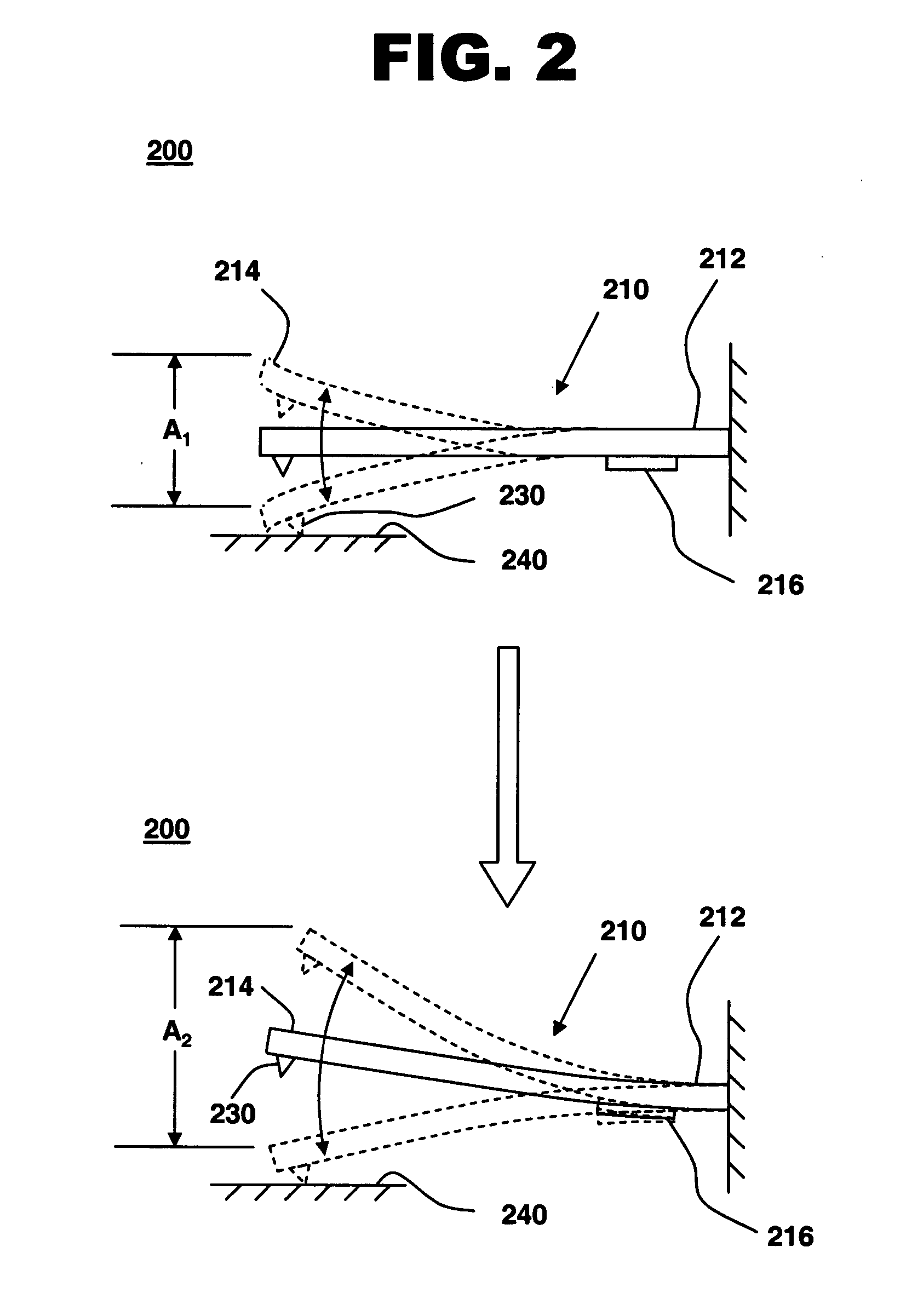Chemical sensor with oscillating cantilevered probe and mechanical stop
a cantilevered probe and chemical sensor technology, applied in the field of chemical sensing methods, can solve the problems of inconvenient sampling, inconsistent and inaccurate results, and damage to the tip or sample, and achieve the effects of improving the accuracy of the sampl
- Summary
- Abstract
- Description
- Claims
- Application Information
AI Technical Summary
Problems solved by technology
Method used
Image
Examples
Embodiment Construction
[0035]FIG. 1 illustrates a system for sensing a chemical species, in accordance with one embodiment of the present invention at 100. Chemical-sensing system 100 includes a cantilevered beam 110, a drive mechanism 120 coupled to cantilevered beam 110, a sense mechanism 122 coupled to cantilevered beam 110, and a mechanical stop 140. Cantilevered beam 110 is driven into oscillation with drive mechanism 120, and oscillating cantilevered beam 110 is tapped against mechanical stop 140. Amplitudes of oscillation are measured, and changes in the oscillation amplitude are measured after exposing cantilevered beam 110 to a chemical species 150 to detect or sense the chemical species. Chemical species 150 is determined based on oscillation amplitudes of cantilevered beam 110 measured by sense mechanism 122 when a treated portion 116 of cantilevered beam 110 is exposed to chemical species 150.
[0036] Cantilevered beam 110 includes a base end 112 rigidly attached to a support. Cantilevered beam...
PUM
 Login to View More
Login to View More Abstract
Description
Claims
Application Information
 Login to View More
Login to View More - R&D
- Intellectual Property
- Life Sciences
- Materials
- Tech Scout
- Unparalleled Data Quality
- Higher Quality Content
- 60% Fewer Hallucinations
Browse by: Latest US Patents, China's latest patents, Technical Efficacy Thesaurus, Application Domain, Technology Topic, Popular Technical Reports.
© 2025 PatSnap. All rights reserved.Legal|Privacy policy|Modern Slavery Act Transparency Statement|Sitemap|About US| Contact US: help@patsnap.com



